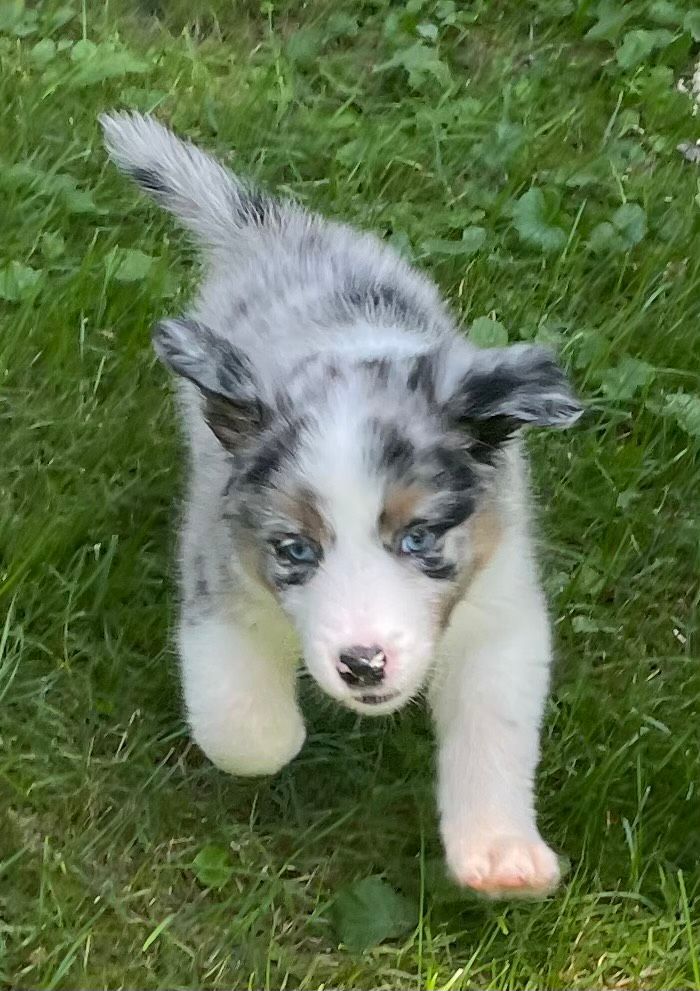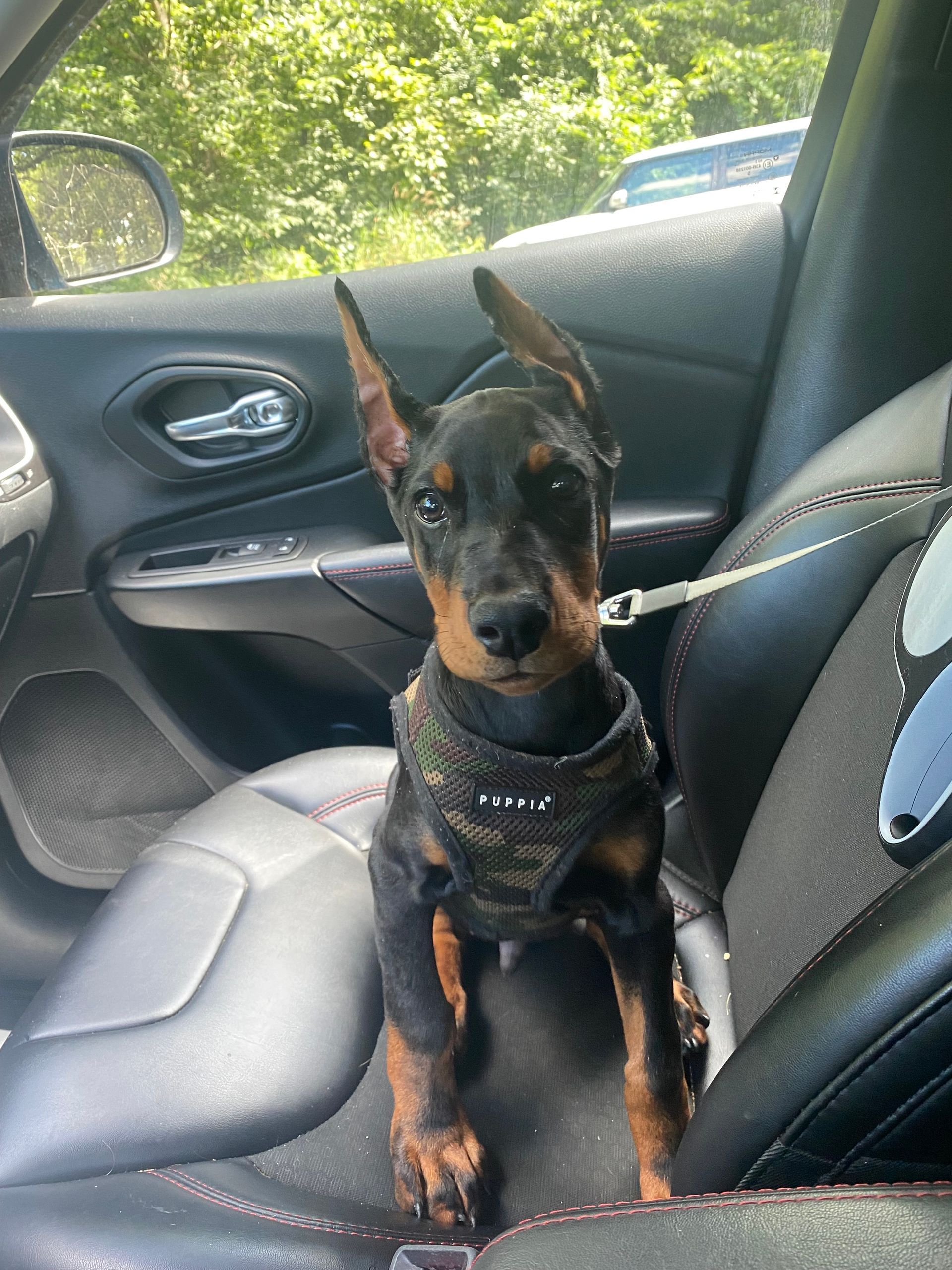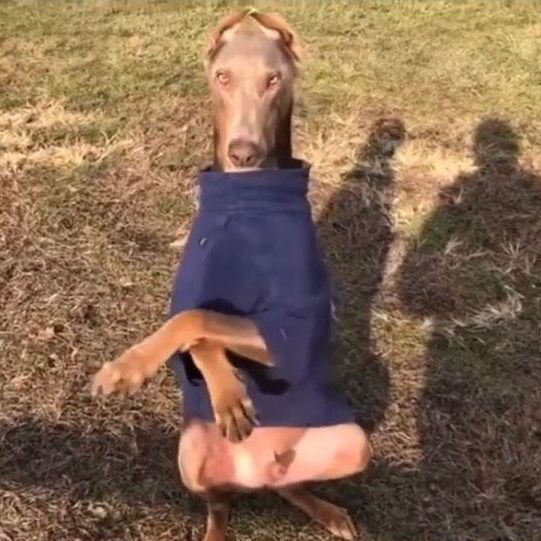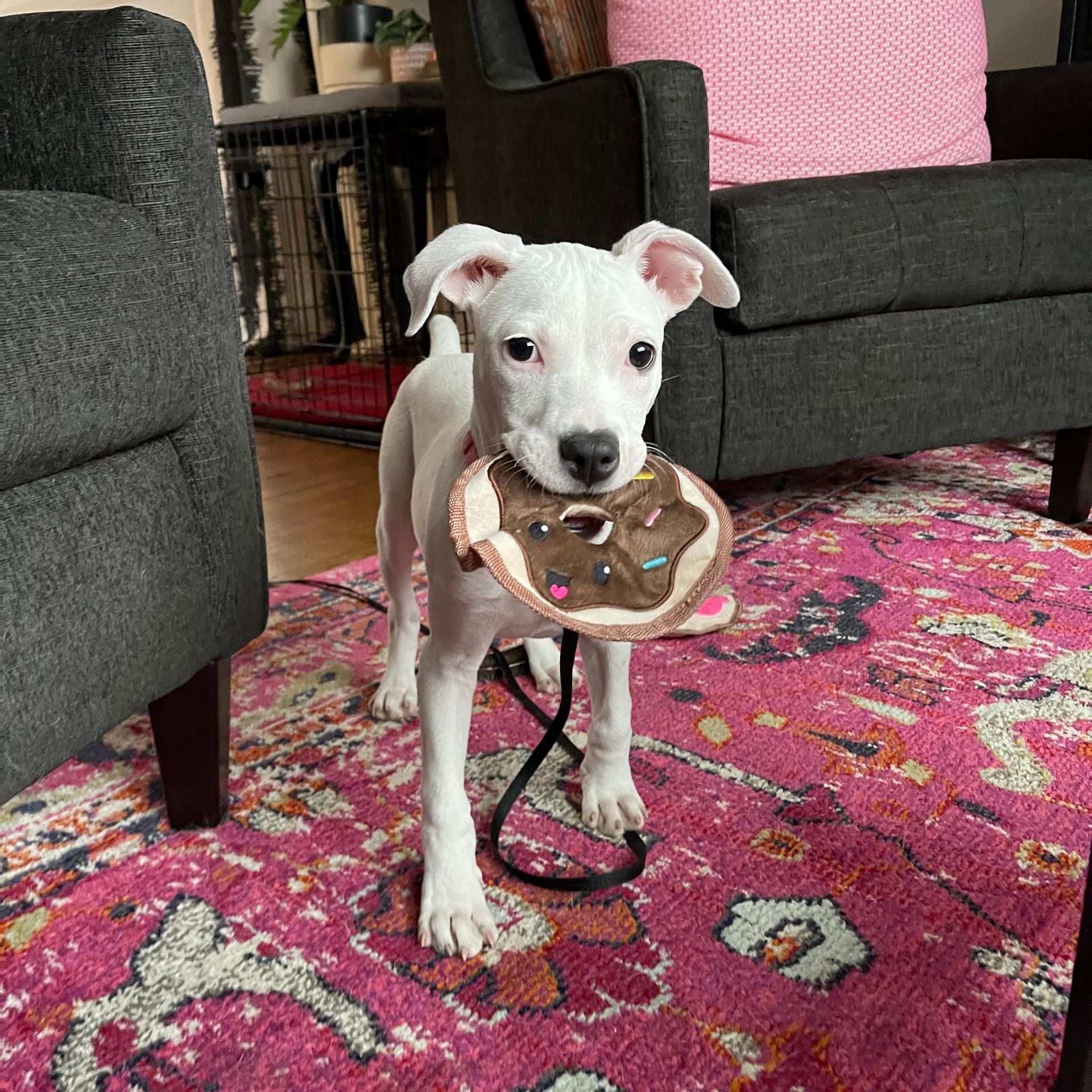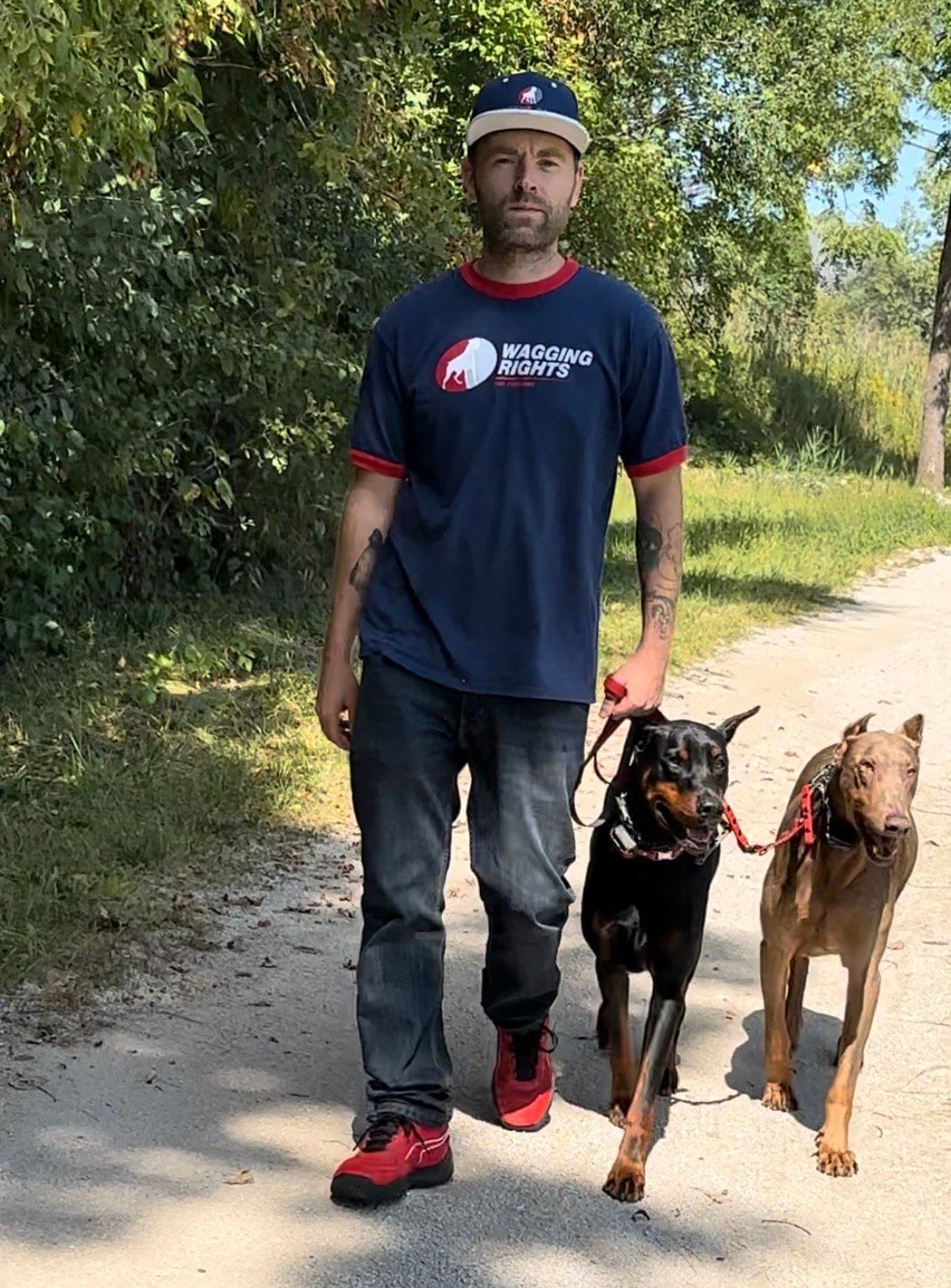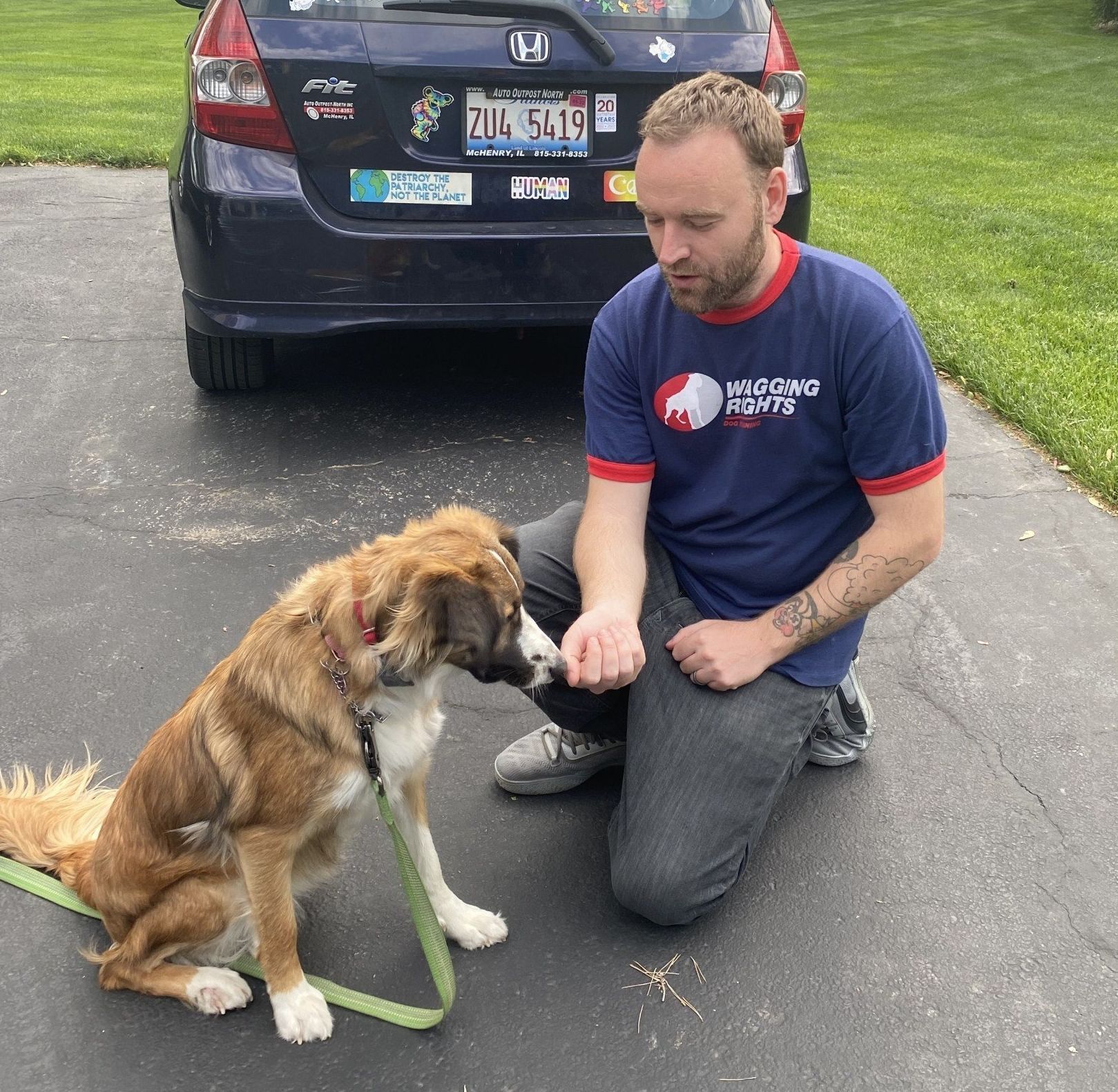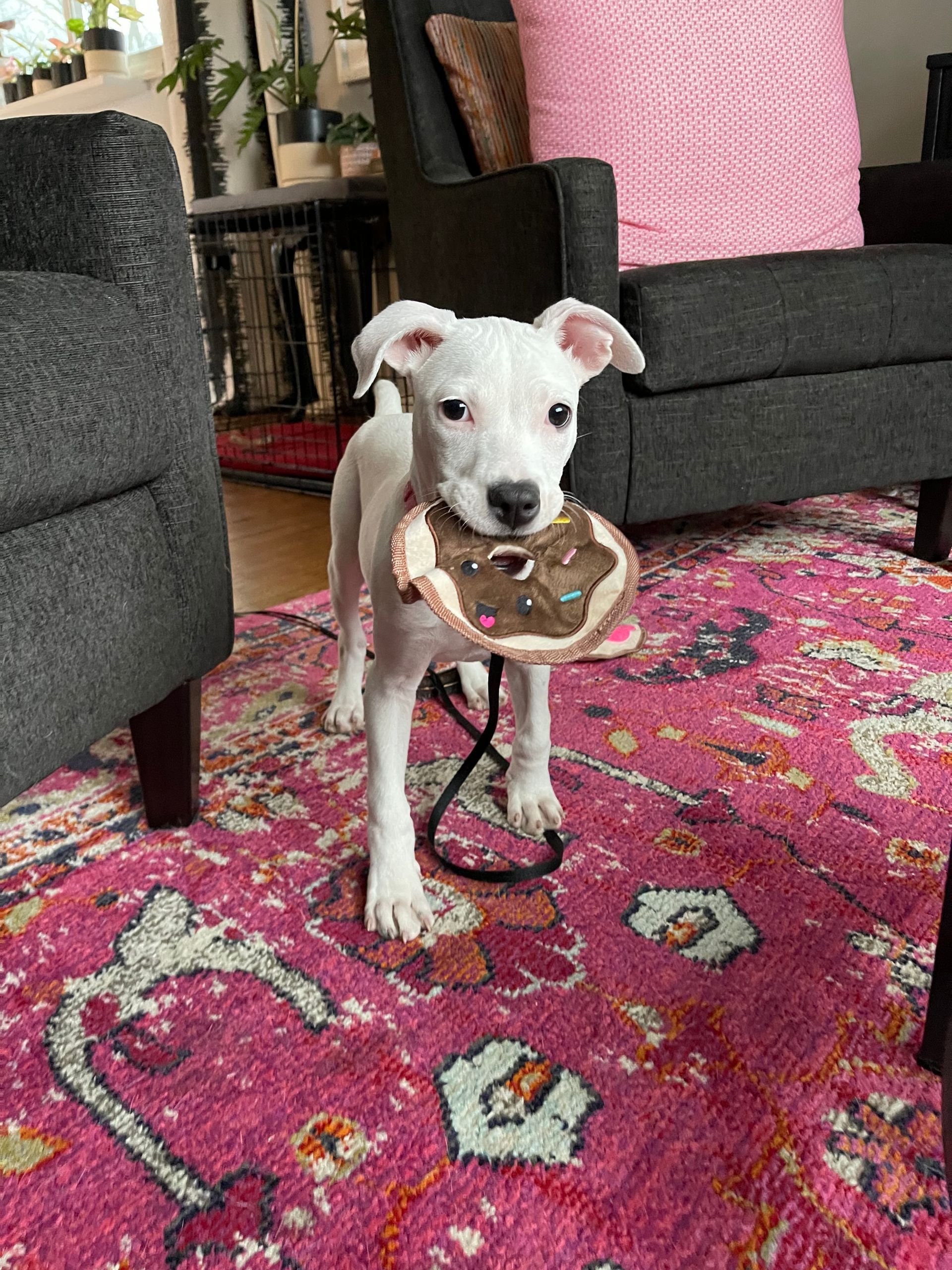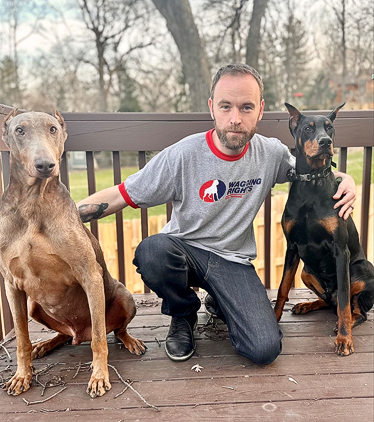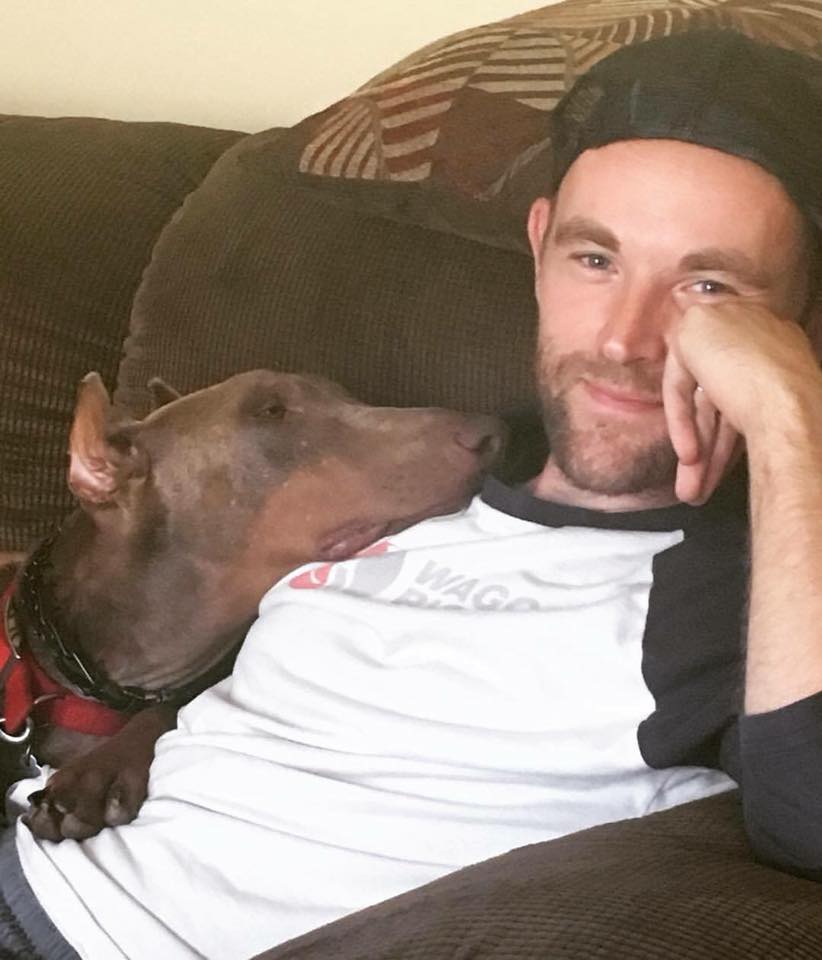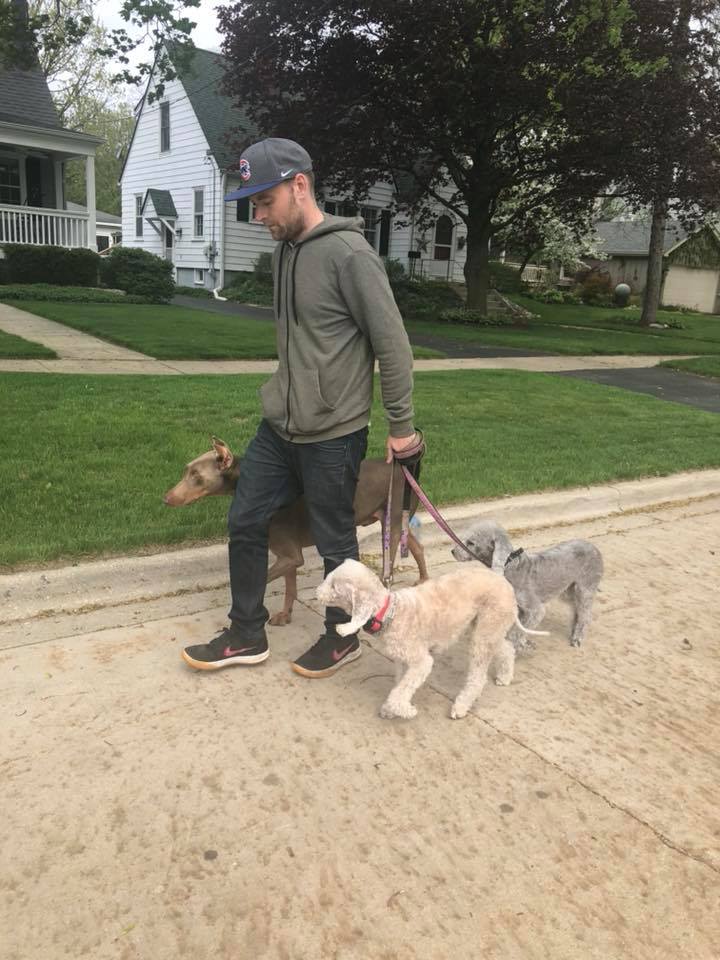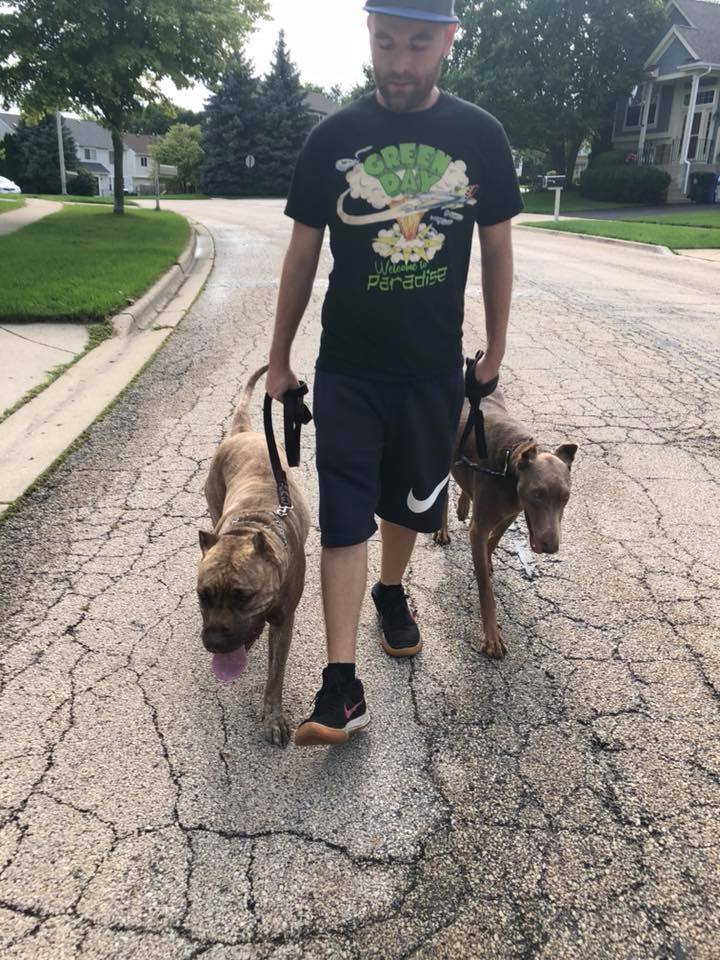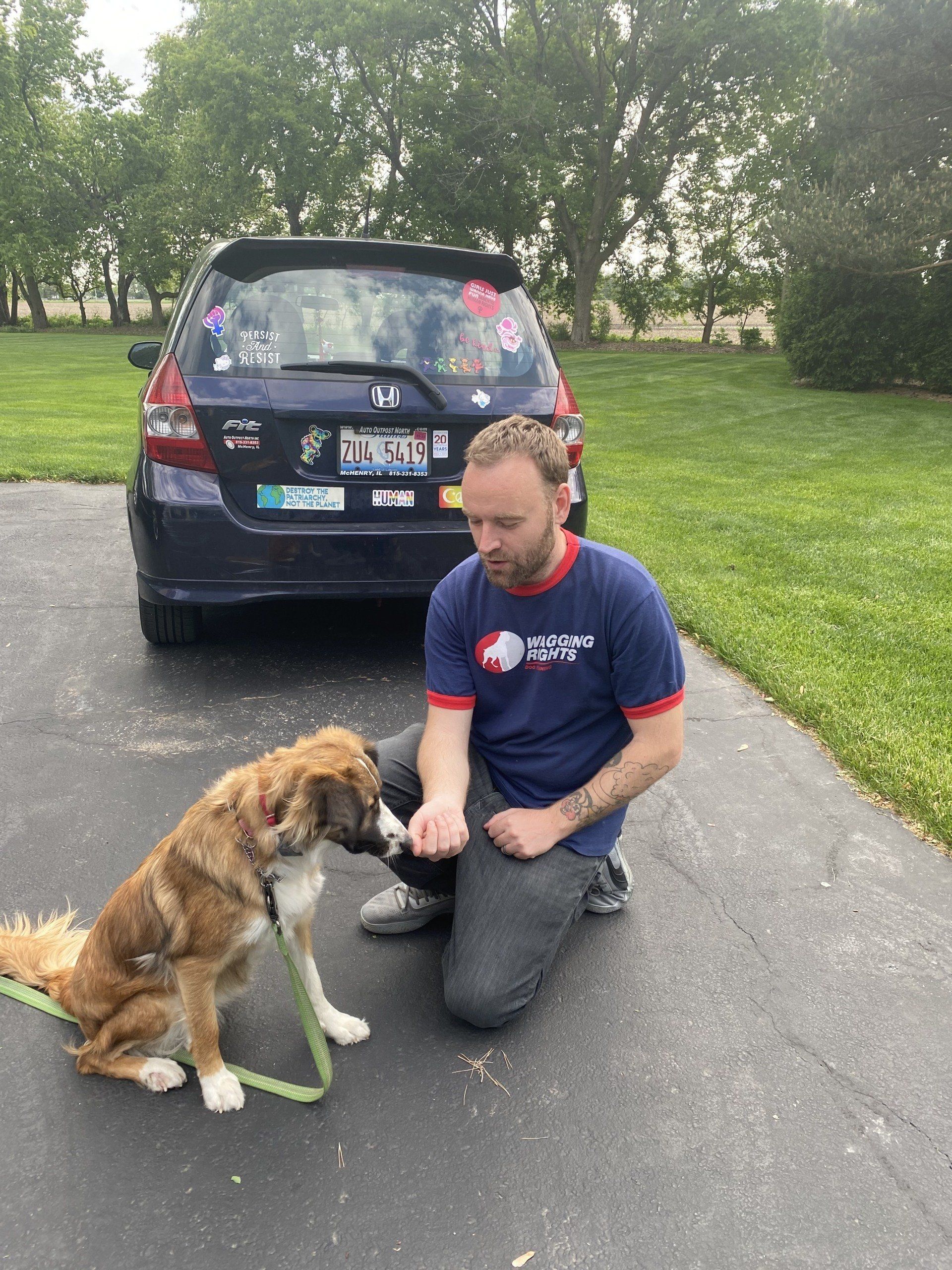Q & A
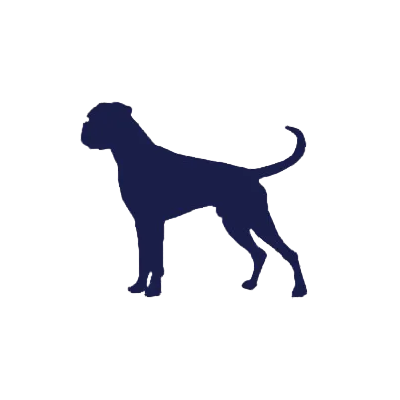
-
WHY DO SOME BEHAVIORS NEED TO BE CORRECTED?
This is very long answer that I will try my best to brief. Training with just positive reinforcement is incomplete training and can be dangerous in my opinion. I will discuss a few different situations as examples. In the case of a jumping dog, a positive only trainer would say train sit, train place, use a gate, keep the dog on leash as management all instead of correcting the dog for the act of jumping. These are not bad suggestions just incomplete suggestions. In the moment the cues of sit, and place can simply be overshadowed by the excitement or just pure interest of people coming in your doorway. Lets say your sit behavior was built of food. Food has a maximum value at some point for dogs in this case lets say the value of food on a scale of 1-10 is an 8, but the interest your dog has in greeting your guest is a 10, what do you think will happen? you will say sit and your dog will go running and jumping towards your guest. Gates and leashes are fine, but restraining is not training. If we want to restrain why don’t we just keep our dogs in crates or in the basement? The end game that people want is for their dog to be loose, not jump and listen when given direction. In this scenario I would correct the dog as soon as they jump. This provides the dog instantly with information that says jumping on people is unpleasant.Once you find something your dog truly finds punishing it should not take very many corrections for your dog to stop this behavior. At this point we can absolutely train towards keeping a dog in a sit or in place, but if you want to get rid of jumping you must correct the act of jumping.
-
HOW OLD DOES MY DOG NEED TO BE FOR TRAINING?
Training starts as soon as you bring them home. With puppies that’s typically 8 weeks of age.
-
HOW LONG SHOULD TRAINING SESSIONS BE?
This depends on your dog and what you’re training. For general obedience, training is most effective when broken up into multiple small 5-20 minute sessions throughout the day. I always suggest reading the dog to make sure they are motivated enough and enjoying the process. Once you see them losing interest, increase their interest in what they are working for and go out on a high note. This is especially true with most obedience behaviors, we want our dog to look at training like we look at our favorite hobby not like homework. Aim for at least 30 minutes daily, broken up into smaller sessions. As long as your dog is motivated and enjoying it though, you can train as much as you want.

-
WHEN CAN I STOP TRAINING?
Dog training is a lifestyle, training should never stop. I compare dog training to dieting and working out. Lets say someone who normally doesn’t eat healthy or workout decides they want to lose 20lbs, so they workout for 2 months and diet, lose the weight and abruptly stop working out and eating healthy. What do you think will happen? If a person is naturally lazy and doesn’t have the determination to stay fit instinctive drift will kick in and they go back to their usual routine. Instinctive drift means that your natural instincts are always working against your learned behaviors. When this happens and they stop eating healthy and working out the weight starts coming back on. Similarly in training a dog, the bad behaviors creep back in once you stop training.
-
DO I ALWAYS NEED TO USE THE E COLLAR?
In general I don’t use the E collar to teach new behaviors. I use it to make already existing behaviors more reliable. I do a conditioning session where we find the working level( the lowest level your dog feels) and teach your dog how they can “turn off” the collar. Once your dog understands the E collar, I give them 1 free cue. For example, lets say your dog understands sit, but for whatever reason decides not to listen to you, at this point I would say “no” simultaneously pressing the continuous button on my remote and help the dog get into position if needed. Because I have taught the dog the cue before the use of the E collar it is fair to now make the cue not optional. The dog learns to listen on the first try to avoid the collar. So in the long run I suggest leaving the collar on while you are training as a just in case safety precaution, but our goal is to have every behavior on a verbal cue without any type of prompting.
-
DO I ALWAYS NEED TO USE FOOD?
You never want to completely remove reinforcement, however you don’t need to reward every repetition. We eventually get your dog on a differential ratio of reinforcement which means rewarding your dog for exceptional performances. This improves performance instead of rewarding at random which does not reward better than average performances. The analogy I make here comparing dogs to people is, do you ever stop getting paid for going to work? How would you feel if you just stopped getting paid? How would you feel if your boss recognized your good work and gave you credit for that?

-
WHAT MAKES YOU DIFFERENT THAN OTHER TRAINERS?
I am different because I spent 6 years teaching pure positive (positive reinforcement, no force). I got to experience and learn the best positive techniques and still felt I needed to know more to be as helpful as possible. I noticed my clients desiring more reliable obedience and better solutions for fear, aggression, separation anxiety and unruly behavior. After exhausting my search of pure positive techniques and not finding proof these techniques actually work for more advanced issues, I decided to look at balanced training (using positive reinforcement, pressure and corrections) Balanced training is a well rounded approach to dog training. The results were incredible and not nearly as forceful as I previously perceived. I learned what behaviors need corrected and how to make my obedience more reliable. Now there isn’t a dog and owner that I can’t help.
-
What is “ Balanced “ Training
The term “ Balanced Training “ means that we use all 4 of the operant conditioning quadrants. We can create motivation through positive reinforcement (food, play, praise, freedom, permission), we can also create motivation through negative reinforcement ( leash guidance, low level e-collar, spacial pressure. ) We can stop behaviors through both positive and negative punishment. We believe that providing the dog with information when they’re correct and incorrect is the best way to provide clarity and that many behavioral issues people have with their dogs is due to lack of clarity.
Dog owners must understand that there is a difference between teaching something brand new and stopping an undesirable behavior. The truth is that positive reinforcement / negative punishment (removing what dogs want/ ignoring bad behavior) doesn’t work for the vast majority of dogs to STOP behavioral issues. We know this because we were positive trainers for many years ourselves, have worked with many positive trainers and now get to work with many dogs that have gone to positive trainers and have not improved much if at all.
We believe that by having more options and not just following ideals that don’t actually work, we have more ways to actually help dogs and owners overcome behavioral issues. This ultimately keeps more dogs in their homes, out of rescues and ultimately keeps them alive. Believe it or not so called “ positive trainers “ will actually suggest euthanasia before a leash correction… sounds messed up to me.
-
How long should your dog’s daily obedience sessions be??
This depends on your dog and what you’re training. For general obedience, training is most effective when broken up into multiple small 5-20 minute sessions throughout the day. I always suggest reading the dog to make sure they are motivated enough and enjoying the process. Once you see them losing interest, increase their interest in what they are working for and go out on a high note. This is especially true with most obedience behaviors, we want our dog to look at training like we look at our favorite hobby not like homework. Aim for at least 30 minutes daily, broken up into smaller sessions. As long as your dog is motivated and enjoying it though, you can train as much as you want.
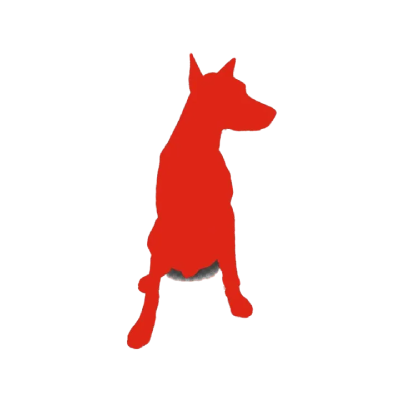
-
What are your daily rules?
Here are our daily rules to maintain structure and a healthy relationship with your dogs. Dogs must wait at every threshold when entering or exiting. Thresholds include any doorways, getting into your car, getting in and out of their crates and through gates. Dogs should wait to be invited onto furniture. Dogs should wait for your permission to eat from their bowls (better yet, do some obedience and have them earn their daily food.) Affection should match the state of mind you’re looking to nurture. In other words, don’t dole out verbal and physical affection when your dog is being pushy, demanding and annoying. Affection can be given during obedience, during play, when a dog is being calm etc. Just make sure your energy matches what you want from your dog. Don’t engage with your dog when they demand to be played with or petted. Your dog should be given permission to greet your house guests or people in public for that matter. Your dog should earn their play time with you. You can do this by practicing obedience, tricks or certain dog sports and use play as the reward. These rules cultivate and nurture a calm, respectful demeanor. They keep our dogs in a more thoughtful less reactive state. They build the value of “YOU” in your dog’s eyes and are key building blocks of a respectful relationship. These rules provide us many training opportunities and get our dogs in practice of frequently listening to our guidance. The more calmness works, the more you will see calm behaviors from your dog and you will start seeing less pushy, demanding, dominant behavior.
-
What can you expect during our training sessions?
During our first session start with a behavior assessment upon introduction. This gives us insight to your dog’s personality. Are they, social, friendly, fearful, nervous, defensive etc. Once we finish our assessment we sit down and discuss basic canine learning theory, household rules, proper management and training equipment. During the first session we ideally spend half our time discussing everything above and the other half the time training. We believe that in order for us to work optimally as a team, you need some background knowledge on how dogs learn. We want you to have the knowledge to critically think like your dog’s personal trainer. We also need you on board with living the correct lifestyle with your dog. Without implementing new rules and management your dog can still practice poor behavior choices and not learn to respect you as their leader. Just like with any other job proper training equipment is a must! Once we start training we like to start from the ground up. I will make a quick comparison to the game of basketball. In order to play the game of basketball you must know how to shoot, dribble, pass, rebound, slide your feet and put your hands up on defense. If you don’t know these skills you can’t really play the game. We believe every dog should understand these training fundamentals, reward markers, food luring, hand targeting, leash pressure and spacial pressure. These are the techniques you and your dog need to understand to create new behaviors.
-
What do we need from our clients?
We are happy to work with dog owners who understand that dog training is a process. We want dog owners who understand that it takes time and effort to raise a dog correctly and that it takes time, commitment and consistency to overcome behavioral issues. We pride ourselves in not only communicating well with dogs, but people as well. “ In fairness to the dog “ is always a saying that we base our training process off of. This is why we are not about quick fixes. We are about creating a new lifestyle and relationship that entails clear communication, fair teaching practices, safe management practices and fair rules. If you’re committed to your dog and the training process, we’d be happy to have you.
If you’re unwilling to change your current habits, put in the work and want a quick fix we are not the dog training company for you


